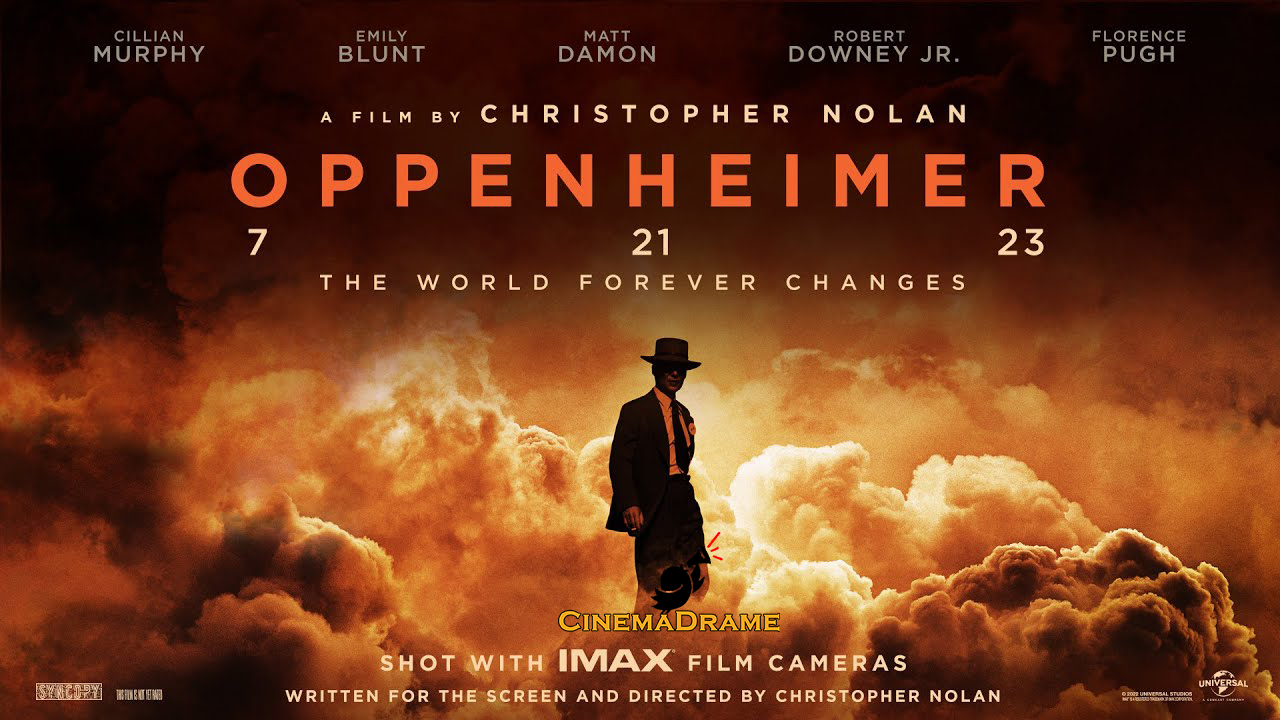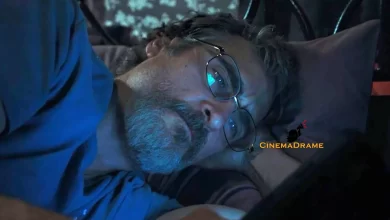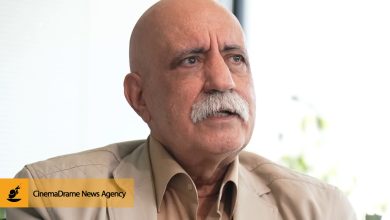Loghman Madayen’s Review of Oppenheimer / Nolan’s Pursuit of a World Free of Nuclear Weapons

According to CinemaDrame news agency, cinema critic Loghman Madayen, in an exclusive commentary, reviewed Christopher Nolan’s Oppenheimer and wrote: I watched Oppenheimer, a scientific biopic that is not the result of the director’s full effort. When Nolan recommended audiences watch this film alongside its accompanying documentary, I did not hesitate, yet the film did not offer a more primary narrative than the documentary. Beyond a committed filmmaking competition, it appeared as the silent cry of Robert Oppenheimer, whose voice was silenced in resentment—reflecting the style of French impressionism, which is less about cinema and more about its mission. This mission is exemplified by the dialogue near the film’s end, before the security clearance committee’s decision is revealed, where Robert asks his friend if history will one day recognize the events in that room. The answer is yes. Nolan, by shedding light on this dark chapter of American history, tried as best he could to be the voice of scientists exploited by the global order, the lament of the people who suffered, and a warning to those who will soon be victims of atomic rivalries.

He addresses the propaganda that deceived everyone: the fight against Japan. Both the documentary and the film prove that dropping the atomic bombs on Hiroshima and Nagasaki was primarily to cement U.S. authority and test this powerful weapon. Japan had already been heavily bombarded for days before with explosives equivalent to multiple nuclear bombs, making the use of the atomic bomb unnecessary. The U.S. government’s instrumental use of science and scientists is portrayed, even exploiting the lifeless body of their critic—like when, after all the pressure and presidential insults toward Oppenheimer, he is honored at the White House to gain media legitimacy. Though, in reality, this occurred during Carter’s presidency, when Oppenheimer’s reputation had somewhat recovered and his efforts to prevent nuclear proliferation were nearing agreement by the U.S. and Soviet Union.
The film depicts the power of the media—the fifth pillar of democracy—showing how, once the false trial news leaks, light immediately conquers darkness and truth takes its place.
American politicians are exposed: Truman, who shamelessly sought only the glory of this dirty propaganda; the Secretary of War, who chose the cities to be bombed based on personal biases—avoiding places he had pleasant memories of traveling with family.
Finally, Nolan once again attempts to raise global awareness about the dangers of nuclear weapons and rekindle the fight against them. This was starkly reflected in the hateful words of an Israeli minister, who bluntly stated Palestinians must be annihilated once and for all with nuclear weapons.
Setting content aside—which was genuinely strong—let’s consider form and technique.
Starting with makeup: we face a severely unrealistic Einstein. But is the problem makeup? No. The casting was wrong. The makeup artist worked hard to recreate the real Albert Einstein—refer to his latest biography photos: from hair and mustache design, smile lines, nose and chin shape, eyes and wrinkles, forehead, sparse eyebrows, to the relaxed facial muscles, everything is accurate. But it fails in form, which is more a director’s fault. While Oppenheimer was well cast, Nolan did not supervise the other actors. This weakness appears with the casting of Niels Bohr, although strong acting and makeup somewhat cover it. Oppenheimer himself is well portrayed; we witness the process of aging from youth to middle age—the wrinkles around his eyes, forehead lines, even the neck shape changes. The aging process is clearly visible in hair and skin color transformation, and his clothing style is consistent, achieving a high resemblance that deserves praise, seen also in the makeup and casting of Lewis Strauss.
In editing, I defend only the fast, well-crafted playback scenes. Otherwise, there is no good start—the film begins documentary-like, throwing the audience into a pool of information to learn how to swim alone in its depths. The film lacks proper pace and rhythm, it’s tiresome with an irregular heartbeat. Redundant scenes were not cut, the sequence arrangement is messy. What should have unfolded in a series over several episodes was squeezed into a single video. However, color correction and lighting are well done, color contrast is respected, sound and image sync is maintained, ambiance between sound and silence preserved, effects are good but fail to engage the audience emotionally. The director’s intention is not strengthened, the atmosphere isn’t impactful. The assembly of meaningless cuts fails to provide continuity for each action, and in one sentence, after directing, editing seriously harms the film.
We criticize the director’s two initial weaknesses before moving to other aspects: first, the screenplay is not polished; second, there is no oversight of editing. We don’t even see an accurate image of the atomic mushroom cloud explosion. Nolan clearly fell into the French impressionism style, trying to enter Oppenheimer’s mind. We see the hero go through a series of events revealing his emotions, his introspection made manifest—even the flashbacks testify to this style. We see a character who committed suicide, and from the film’s midpoint, the fast editing inspired by Abel Gance and Jean Epstein appears. But what about the initial slow, boring rhythm? It is a serious bug. Even in framing, Nolan tries to show the internal state of the character—defocusing the camera, blurring images, enforcing naturalism on actors to reveal emotions and tensions at their peak. Yet again, the action lacks sufficient time for the viewer to reflect on characters’ reactions and states of mind, and character development is not well formed. He doesn’t pay serious attention to staging, settling for impressive and realistic locations without deeper impact, ignores color psychology, focusing more on color palettes. All these mean he fails in his transition to impressionism, just as his attempt to cover repeated weaknesses with a few erotic Kamra shots failed.
Camera angles were excellent—like when Einstein is introduced in a distant shot, or when Oppenheimer is shown from a high angle during the witness hearing, bent over with his head in his hands, symbolizing weakness and vulnerability. Or when Strauss realizes his defeat in court, losing the commerce secretary seat. Or after Strauss’s official defeat, Oppenheimer is shot from a low angle in the courtyard to show his power stance.
Nolan was so influenced by Cillian Murphy that in the scene where scientists are banned from leaving Los Alamos and Teller angrily works on the hydrogen bomb, he borrows from Peaky Blinders: the camera slowly circles 180 degrees around each scientist, pointing a finger at each, giving separate missions.
Oppenheimer was an anti-hero who, contrary to Niels and Einstein’s advice, created the atomic bomb. But once he realized its true power, he tried to stop its spread—and thus became a hero.
The atomic bomb is the connecting element that linked the fate of the world.
Oppenheimer is the hero who overcame obstacles, won the atomic race against Germany and the Soviet Union, forced Japan to surrender, and ultimately defeated Strauss, the film’s antagonist.
I see the first turning point when Oppenheimer tells the lab official, “I know what you’re doing, I don’t need special security clearance and I agree with your work.” Lawrence welcomes Oppenheimer, and the challenge begins.
The climax is when Dr. Hill reveals the security clearance committee’s misconduct in court, exposing Strauss’s actions against Oppenheimer—truths are uncovered at this moment.
The second turning point is when the committee declares Oppenheimer a loyal citizen in its final verdict, validating his courtroom efforts and bringing him peace. Remember, Einstein told him the government had exploited him, urging him to turn his back—but Oppenheimer replied, “I love this country and will not turn my back on it.”
Characterization is weak and cluttered; it forces the audience to stay alert through repeated flashbacks. The abundance of characters dilutes characterization.
There are many good suspense moments—provided you haven’t seen the documentary before the film—like when he tries to kill his professor, when we think he fought with Einstein, when he realizes the true power of the atomic weapon and attempts to oppose it, when he delivers the bomb to the government but is discarded like a used rag, insulted even by the president, and when he barely escapes court defeat.
Nolan’s symbolism is precise. From the start, inspired by a real story, he presents an apple representing science—the same apple that led to the discovery of gravity—poisoned by Oppenheimer injecting cyanide in an attempt to kill his professor. This symbolizes Oppenheimer’s attempt to poison and kill science by creating the atomic bomb, which should have been beneficial.
But it doesn’t end here. After the atomic test, at the victory celebration when Oppenheimer enters the hall, his eyes blur. The camera angle makes it seem like people’s eyes are fixed on a statue of the Trinity (Jesus). It implies Oppenheimer bears the sins of others like Christ, gathering disciples, betrayed by one, and crucified. However, Nolan’s interpretation is incorrect—here, Oppenheimer carries mostly his own sins, not others’.
The story’s timeline is not respected, a serious flaw. Scenes from different periods are shown simultaneously, like Oppenheimer building the bomb while the security clearance committee sessions occur, yet the trial where Dr. Hill exposes Strauss happens years later. The audience only glimpses fragments of reality, which is a big weakness, forcing viewers to read several books and watch documentaries to understand the film.
Another point is the nuclear test operation’s name: Nolan called it Trinity, meaning the Father, Son, and Holy Spirit. With this naming, he had two goals: first, to say that when scientists gather, they can transform the world; second, just as after Christ’s crucifixion the world entered a new era, after this weapon’s test, the world enters a new age.
Another note: during the victory speech, when Oppenheimer’s mental state deteriorates and images blur, a girl in front of him melts, her skin falling off. She is Nolan’s daughter, and the director tries to say that anyone who creates such a dangerous weapon must first imagine its effect on their own family.
Another point is the contrast between color and black-and-white imagery. In color scenes, we see everything through Oppenheimer’s mind. This is why in Heisenberg’s class, when the camera is on him, his language is German, but when it returns to Oppenheimer, the language shifts to English—simultaneous translation forming in Oppenheimer’s mind. That’s why the final meeting of Oppenheimer and Einstein—colorful—is joyful, but the earlier black-and-white meeting is bitter and sad, because the monochrome scenes show Strauss’s perspective, who views Oppenheimer as arrogant and selfish. Nolan was inspired by Time magazine’s covers that once printed Oppenheimer in color and once in black and white.







